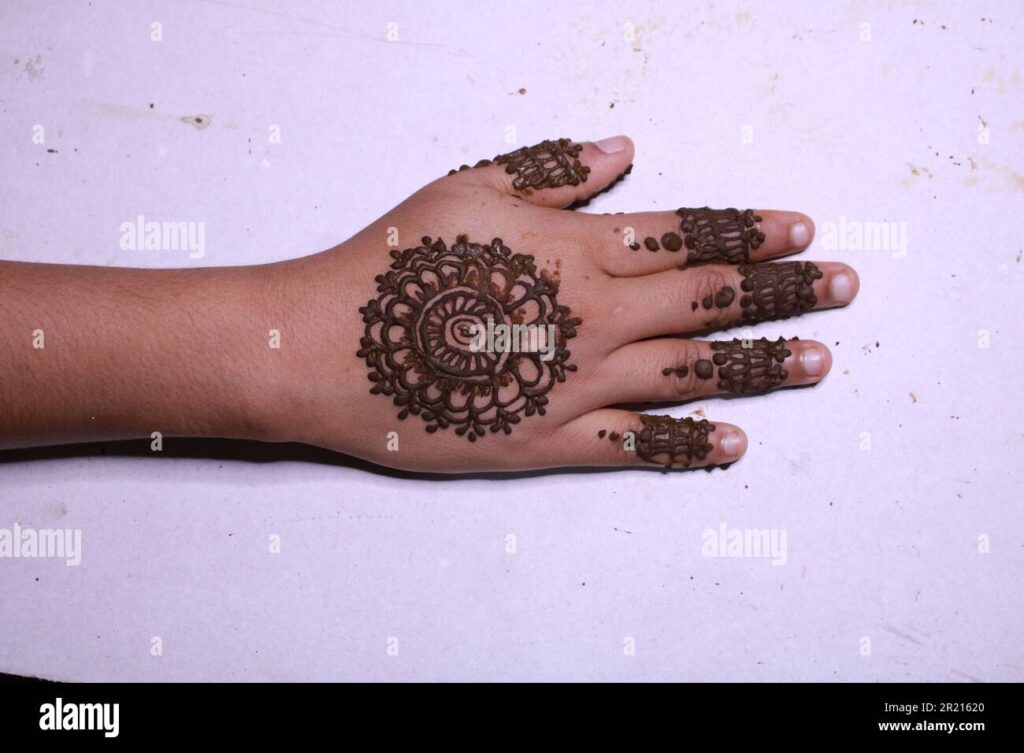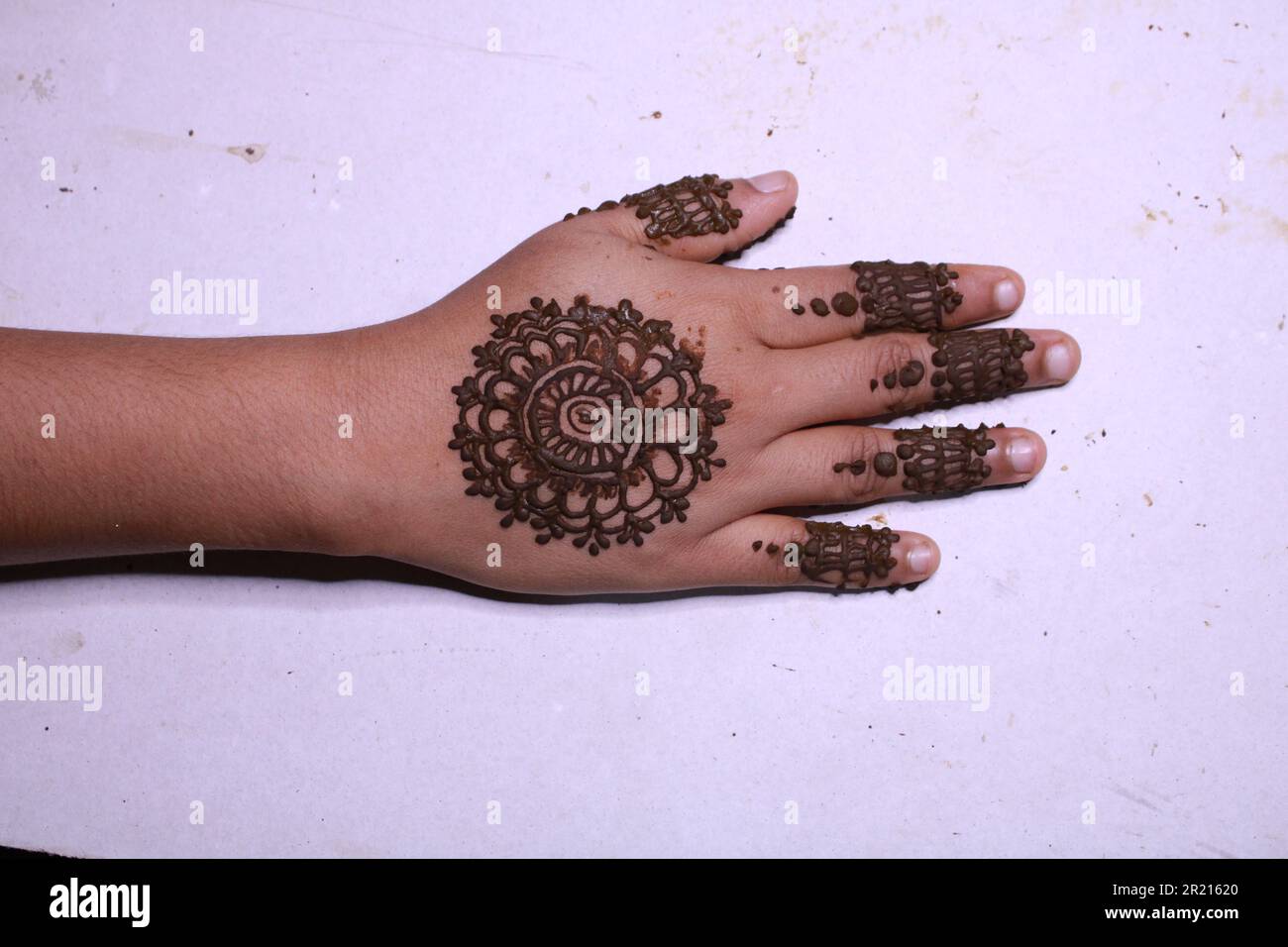
Effortless Elegance: Mastering the Art of Easy Henna Tattoos
Henna tattoos, also known as mehndi, have been a cherished form of body art for centuries, deeply rooted in cultural traditions across South Asia, the Middle East, and Africa. These temporary tattoos, created using a paste derived from the henna plant, offer a beautiful and intricate way to adorn the skin without the permanence of traditional tattoos. While professional henna artists can create stunningly complex designs, the allure of easy henna tattoos lies in their accessibility and the ability to create beautiful body art at home. This article explores the world of easy henna tattoos, providing guidance on creating your own stunning designs, understanding the safety considerations, and appreciating the cultural significance of this ancient art form. Whether you’re a beginner looking to explore your artistic side or simply seeking a fun and temporary way to express yourself, mastering easy henna tattoos opens a world of creative possibilities.
Understanding Henna and Its Origins
The henna plant, Lawsonia inermis, is the source of the dye used for henna tattoos. The leaves of the plant are dried, crushed into a fine powder, and then mixed with liquids like water, lemon juice, or strong tea to create a paste. This paste is then applied to the skin, where it stains the outer layer, leaving behind a temporary tattoo that can last from one to three weeks, depending on factors like skin type, aftercare, and the quality of the henna paste. The practice of applying henna dates back thousands of years, with evidence suggesting its use in ancient Egypt for cosmetic and medicinal purposes. Over time, henna became an integral part of cultural ceremonies and celebrations, particularly weddings, where intricate henna designs are applied to the bride’s hands and feet as a symbol of good luck and prosperity.
Choosing the Right Henna Paste for Easy Henna Tattoos
Selecting the right henna paste is crucial for achieving beautiful and safe easy henna tattoos. Natural henna paste, made from pure henna powder and natural ingredients, is generally considered safe for most people. However, commercially available henna pastes may contain chemical additives, such as paraphenylenediamine (PPD), which can cause severe allergic reactions, skin irritation, and permanent scarring. It’s crucial to avoid “black henna,” which often contains high concentrations of PPD. Always opt for natural henna paste, which will stain the skin a reddish-brown color. Look for reputable suppliers who provide clear information about the ingredients in their henna paste. You can also make your own henna paste at home using high-quality henna powder, lemon juice, sugar, and essential oils like lavender or tea tree oil. This allows you to control the ingredients and ensure the safety of your henna tattoo experience.
Essential Tools and Supplies for Easy Henna Tattoos
To embark on your easy henna tattoo journey, you’ll need a few essential tools and supplies:
- Henna Paste: Choose a natural, pre-made henna paste or prepare your own using high-quality henna powder.
- Applicator Bottles or Cones: These allow for precise application of the henna paste. Cones are often preferred for intricate designs, while bottles are useful for filling in larger areas.
- Transfer Paper and Stencils: For beginners, stencils can be incredibly helpful in creating accurate and symmetrical designs.
- Lemon Juice and Sugar Mixture: This mixture helps to keep the henna paste moist on the skin, allowing for a darker and longer-lasting stain.
- Cotton Swabs: Use these to clean up any mistakes or smudges during the application process.
- Paper Towels: Keep paper towels handy for wiping away excess henna paste.
- Eucalyptus or Lavender Oil: Applying a small amount of these oils to the skin before applying henna can enhance the stain.
Simple Designs for Easy Henna Tattoos
When starting with easy henna tattoos, it’s best to begin with simple designs. Here are a few ideas to get you started:
- Floral Patterns: Simple floral motifs, such as daisies or lotus flowers, are easy to create and add a touch of elegance.
- Geometric Shapes: Incorporate basic geometric shapes like circles, triangles, and squares into your designs.
- Dots and Lines: Create intricate patterns using dots and lines of varying thicknesses.
- Tribal Inspired Designs: Explore simple tribal patterns for a bold and unique look.
- Simple Vines and Leaves: Create flowing vines with delicate leaves for a natural and organic design.
Remember to practice your designs on paper before applying them to your skin. This will help you get a feel for the henna applicator and refine your technique.
Step-by-Step Guide to Applying Easy Henna Tattoos
Follow these steps to create your own stunning easy henna tattoos:
- Prepare Your Skin: Wash the area where you’ll be applying the henna with soap and water. Exfoliate gently to remove any dead skin cells, which can hinder the henna stain.
- Apply Eucalyptus or Lavender Oil: Apply a small amount of eucalyptus or lavender oil to the skin to enhance the stain.
- Transfer Your Design (Optional): If using a stencil, carefully apply it to your skin. You can also freehand your design if you’re feeling confident.
- Apply the Henna Paste: Gently squeeze the henna paste from the applicator bottle or cone, following your design. Apply a thick layer of paste for a darker stain.
- Allow the Henna to Dry: Let the henna paste dry completely, which can take anywhere from 30 minutes to several hours. The longer the paste stays on your skin, the darker the stain will be.
- Apply Lemon Juice and Sugar Mixture: While the henna is drying, gently dab it with a mixture of lemon juice and sugar to keep it moist.
- Remove the Henna Paste: Once the henna is completely dry, gently scrape it off your skin. Avoid washing the area with water for at least 2-4 hours.
- Moisturize Your Skin: Apply a natural oil, such as coconut oil or olive oil, to moisturize your skin and protect the henna stain.
Aftercare Tips for a Long-Lasting Henna Tattoo
Proper aftercare is essential for ensuring a dark and long-lasting easy henna tattoo:
- Avoid Water: Avoid washing the area with water for as long as possible, ideally for at least 2-4 hours after removing the henna paste.
- Moisturize Regularly: Apply a natural oil, such as coconut oil or olive oil, to moisturize your skin several times a day.
- Avoid Harsh Soaps and Chemicals: Avoid using harsh soaps, detergents, or chemicals on the area, as these can fade the henna stain.
- Avoid Exfoliation: Avoid exfoliating the area, as this will remove the stained skin cells.
- Limit Sun Exposure: Limit sun exposure to the area, as prolonged exposure can fade the henna stain.
Safety Considerations When Using Henna
While natural henna is generally considered safe, it’s crucial to be aware of the potential risks associated with “black henna” and henna pastes containing chemical additives. Always purchase henna paste from reputable suppliers and avoid products that contain PPD or other harmful chemicals. Perform a patch test before applying henna to a large area of your skin. Apply a small amount of henna paste to a discreet area, such as your inner arm, and wait 24-48 hours to see if any allergic reaction occurs. If you experience any itching, redness, or swelling, discontinue use immediately and consult a doctor. By taking these precautions, you can enjoy the beauty of easy henna tattoos safely and responsibly.
The Cultural Significance of Henna Tattoos
Henna tattoos hold deep cultural significance in many parts of the world. In South Asia, henna is an integral part of wedding ceremonies, where intricate designs are applied to the bride’s hands and feet as a symbol of good luck, prosperity, and fertility. The application of henna is often a joyous occasion, celebrated with music, dancing, and traditional rituals. In the Middle East and Africa, henna is used for various celebrations and festivals, as well as for medicinal purposes. Understanding and respecting the cultural significance of henna is essential when participating in this ancient art form. Avoid appropriating designs or using henna in a way that disrespects cultural traditions. Instead, embrace the opportunity to learn about the rich history and symbolism of henna and appreciate its beauty and cultural significance.
Troubleshooting Common Henna Tattoo Problems
Even with careful preparation and application, you may encounter some common problems when creating easy henna tattoos. Here are some solutions:
- Faint Stain: This can be caused by several factors, including poor quality henna paste, insufficient drying time, or inadequate aftercare. Ensure you’re using high-quality henna paste, allowing the paste to dry completely, and moisturizing regularly.
- Uneven Stain: This can be caused by uneven application of the henna paste or variations in skin type. Apply the henna paste evenly and exfoliate your skin before application.
- Smudging: This can occur if the henna paste is not allowed to dry completely or if it’s disturbed during the drying process. Avoid touching the henna paste while it’s drying and protect it from contact with clothing or other surfaces.
- Allergic Reaction: If you experience any itching, redness, or swelling, discontinue use immediately and consult a doctor.
Advanced Techniques for Henna Tattoos
Once you’ve mastered the basics of easy henna tattoos, you can explore more advanced techniques to create intricate and stunning designs. These include:
- Layering: Create depth and dimension by layering different patterns and textures.
- Shading: Use varying pressure to create shading effects and add dimension to your designs.
- Negative Space: Incorporate negative space into your designs to create visual interest and balance.
- Intricate Floral Motifs: Explore more complex floral patterns, such as roses, lilies, and orchids.
- Geometric Patterns: Create intricate geometric patterns using advanced techniques like tessellation and fractal geometry.
Experiment with different techniques and styles to develop your own unique henna tattoo aesthetic. [See also: Henna Tattoo Aftercare Tips] [See also: Natural Henna Paste Recipe] [See also: History of Henna Art]
Conclusion: Embracing the Art of Easy Henna Tattoos
Easy henna tattoos offer a beautiful and accessible way to express your creativity and adorn your skin with intricate designs. By understanding the origins of henna, choosing the right henna paste, mastering simple application techniques, and practicing proper aftercare, you can create stunning temporary tattoos that reflect your personal style and celebrate the rich cultural heritage of this ancient art form. Whether you’re a beginner or an experienced artist, the world of easy henna tattoos offers endless possibilities for creative exploration and self-expression. So gather your supplies, embrace your inner artist, and embark on a journey of effortless elegance with easy henna tattoos.

